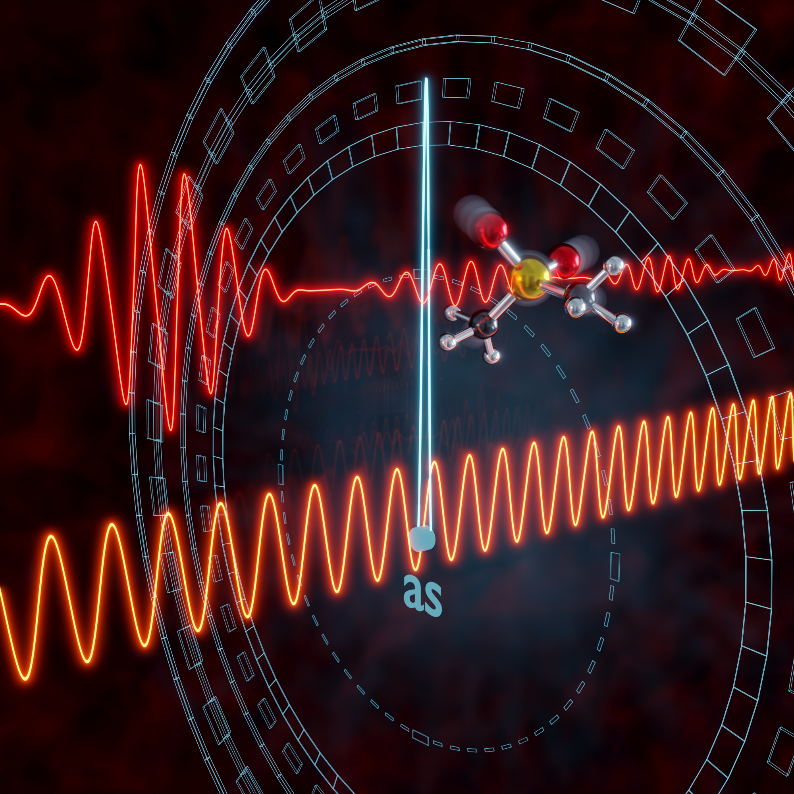
Electro-optic sampling (EOS) of infrared electric fields has recently set sensitivity and dynamic-range records in broadband molecular vibrational spectroscopy. In a joint effort of scientists at the Laboratory of Lightwave Metrology and Attoworld, the team has demonstrated a new, rapid EOS acquisition technique, having the ultrahigh stability of infrared waveforms generated by intrapulse difference-frequency mixing at its core.
By using a modulated repetition-frequency lock between two laser oscillators for scanning, Alexander Weigel, Philip Jacob and co-authors showed electro-optic sampling of 2,800 mid-infrared waveforms per second. While being highly versatile, such delay scanning with two synchronized lasers has up to now been limited in timing precision by the electronic jitter of the frequency lock. In their work, the authors introduce the new technique of electro-optic delay tracking (EODT) to provide the delay axis with down to few-attosecond precision. EODT samples a known and highly reproducible infrared reference waveform simultaneously with the main electro-optic measurement, and provides, in this way, a precise calibration for the pulse-to-pulse delay between the two lasers.
The new instrument combines the speed of dual-oscillator scanning with the delay precision of EODT. The authors demonstrate the measurement reproducibility by repeatedly recording the infrared field responses of dimethyl sulfone and human blood serum over up to minutes of acquisition time, and then averaging thousands of scans, directly in time domain. In another test experiment, the authors capture a liquid injection event with a timing resolution of 357 µs.
The technique has direct applications in label-free flow cytometry, and for improving the sensitivity in infrared molecular fingerprinting for biomedical applications. Furthermore, precise delay calibration with EODT is not limited to electro-optic-sampling measurements, but provides a general route to obtain the delay axis in dual-oscillator spectroscopy with picosecond delay ranges. It is, for example, also directly compatible with many nonlinear spectroscopies, such as pump-probe, coherent anti-Stokes Raman and photon echo spectroscopies – especially those which do not require carrier-envelope phase stabilization of the driving sources.
Illustration:
RMT.Bergues
Original publication:
A. Weigel, P. Jacob, W. Schweinberger, M. Huber, M. Trubetskov, P. Karandušovský, C. Hofer, T. Buberl, T. Amotchkina, M. Högner, D. Hahner, P. Sulzer, A. Leitenstorfer, V. Pervak, F. Krausz, I. Pupeza, “Dual-oscillator infrared electro-optic sampling with attosecond precision” Optica 11, 726-735 (2024).
